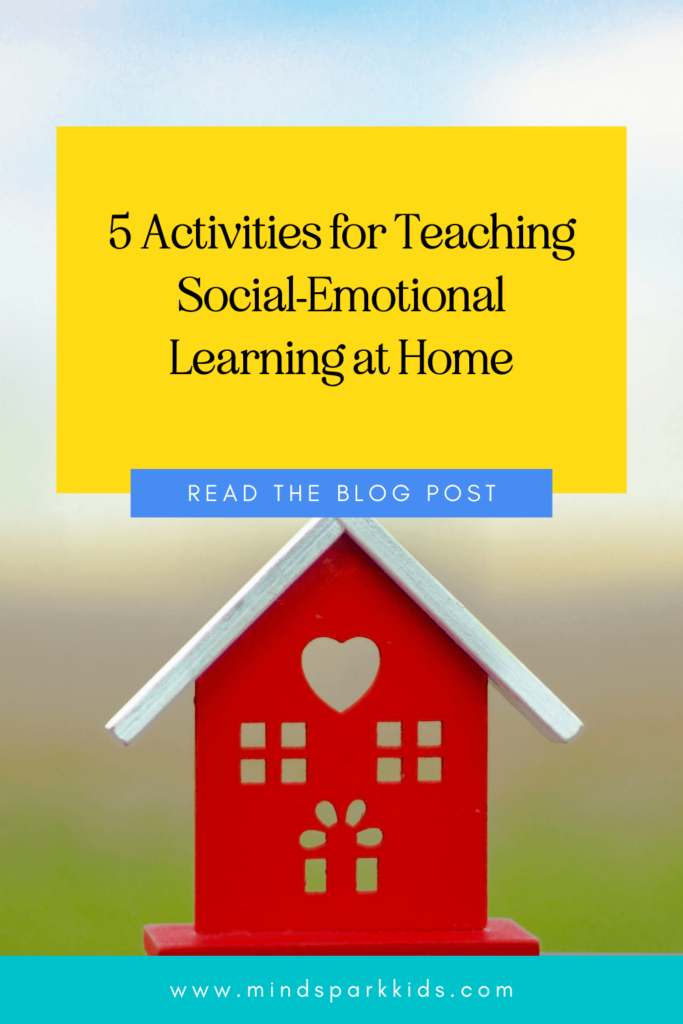Social-Emotional Learning should begin at home with children as young as infants and should carry throughout their adolescent lives. With a little creativity and practice, your child can begin to learn and develop skills to support social-emotional growth while having fun at home. Below are ten engaging activities to help foster your child’s social-emotional learning.
1. Put a Name to The Face
- Using books you can reenact a person’s emotions with your child. Point to the picture in the book and say, “He looks angry. Let me see your angry face.”
- Use emotion cards or pictures printed from the web to help your child identify how she is feeling. Place the cards in front of your child and say, “Show me how you are feeling today.” Be sure to model your own emotions, as well, during this activity.
- Focus on positive emotions such as: happy, joyful, excited; and negative emotions like: angry, nervous, scared.
2. It’s Time to Pretend
- Roleplay using dolls, animals, or just yourselves to act out various social situations. Be sure to give a specific name to emotions and even model words that would be used in those scenarios. This is a great time to work on conflict resolution skills.
- Revisit recent moments when your child may have struggled to regulate her emotions and act those out through play. This isn’t a time to bring up your child’s past mistakes but should be a natural learning moment to provide skills for handling those difficult moments in the future.
3. Draw Me a Picture
- Have your child choose an emotion for you to draw, model how you are drawing and what you are thinking as you create your picture. Then, provide your child the opportunity to draw an emotion as well. Ask questions about that emotion and see if he can remember a time when he may have been feeling that way.
- Draw an emotion then let your little one try to guess the emotion that you drew. Take turns guessing and even make it into a game to see who can guess the most emotions correctly.
4. Snuggle Up with a Good Book
- The options for Social-Emotional Learning books are truly endless. Choose a variety of books or focus on one specific topic. If your little one has been struggling with meeting new people, choose a few titles which focus on social interactions. Take time to point out the noticeable emotions and how the characters use their social-emotional skills to solve problems.
- Take a trip to the library together to choose books that focus on social-emotional learning that your child shows an interest in. He may notice certain emotions, when flipping through the pages, that he connects with or is struggling to understand.
5. Create a Home Base
- Work together with your child to create a space in your home where your family can focus on various social-emotional skills. This area should have space for pictures and lists and should also have room to create a cozy calm down area.
- Equip your home base with the following:
- Pictures of family members and loved ones
- Basic rules for your child to know and practice– try to focus on 3-4 rules
- Pictures of emotions– use real faces, not emojis or animals
- Routines (morning, bedtime, naptime, etc) with pictures for younger children and words for older children
- Calm down techniques to review and practice often (deep breathing, affirmations, counting to ten)
- Cozy items such as blankets, a large pillow, stuffed animals, or a beanbag
- Spend time with your child in the home base reviewing the information, practicing the various techniques, and discussing the pictures and emotions.
By Hana Damico
Try MindSpark Kids FREE for 7 days!
At MindSpark Kids, we help parents, caregivers, educators, and mental health professionals teach children how to develop necessary life skills. Why? Because socially and emotionally intelligent children grow up to be healthy, happy adults.
MindSpark Kids is an online membership with a database of social and emotional learning videos and worksheets to help children understand their emotions, make good decisions, and think critically.

Download your FREE Emotions Parent & Educator’s Guide
Join our newsletter and download our FREE guide now and start building your child's emotional intelligence today!